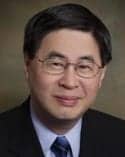 Attracting and retaining staff has become a major challenge for clinical labs. Where will tomorrow’s dedicated laboratory professionals be found? According to Department of Labor projections, US labs need 138,000 new clinical laboratory practitioners in the decade of 2002 to 2012 to handle growth in test demand and to offset attrition and retirements. Yearly demand for lab services surpassed the 10 billion mark in 2001, and according to the Bureau of Labor Statistics, the demand continues to increase. Some statistics:
Attracting and retaining staff has become a major challenge for clinical labs. Where will tomorrow’s dedicated laboratory professionals be found? According to Department of Labor projections, US labs need 138,000 new clinical laboratory practitioners in the decade of 2002 to 2012 to handle growth in test demand and to offset attrition and retirements. Yearly demand for lab services surpassed the 10 billion mark in 2001, and according to the Bureau of Labor Statistics, the demand continues to increase. Some statistics:
• Approximately 12,200 new laboratory professionals are needed annually.
• CLS/CLT programs in the US produce 4,000 graduates annually.
• Medical-technologist programs accredited by the National Accrediting Agency for Clinical Laboratory Sciences (NAACLS) declined from 252 in 2001 to 228 in 2005.
• NAACLS-accredited medical laboratory technician programs fell from 230 in 2001 to 203 in 2005.
• At current rates, clinical lab staff levels fall behind by 8,200 laboratorians each year.
 Stephen E. Kahn, PhD, DABCC, FACB
Stephen E. Kahn, PhD, DABCC, FACB
This summer’s American Association for Clinical Chemistry (AACC) annual meeting discussion on labor shortages will be moderated by Stephen E. Kahn, PhD, DABCC, FACB. He is a professor and interim chair of pathology, as well as vice chair of laboratory medicine, at Loyola University Medical Center (Maywood, Ill). The town hall session will highlight successful strategies now being used to attract and retain more lab professionals.
“The specific strategies being focused on include the benefits of professional associations collaborating in a coalition; using creative retention and recruitment techniques; using automation to make more effective use of staff resources; and involving industry, including funding of scholarships at both the associate and bachelor’s degree levels,” Kahn says.
Success in attracting new lab professionals varies between states and geographical regions, according to Kahn. “The best solutions are often local and customized to a particular site or area,” he says. “Even with success, there has simply not been enough progress across the country on these initiatives.” He says federal funding initiatives intended to funnel more money into allied health training programs continue to come up far short of what is needed overall.
Many complex problems are responsible for longstanding lab staff shortages. “The full value of laboratory test information has yet to be clearly recognized in this country and especially in health care reimbursement schedules,” Kahn says. “Although they are critically vital members of the health care team, the perceived value of laboratory professionals just is not as strong as it should be.”
Laboratory professionals must take advantage of opportunities to better communicate the positive aspects and images of their vital positions to the public and to legislators, Kahn says. “Although there are still young people interested in science and technology, the laboratory professions are not anywhere near the top of the list of careers most would consider,” he says. “Finally, better salaries and benefits are deserved, and would make a major difference.”
The Clinical Laboratory Science Student
Paula Garrott, EdM, CLS (NCA), is the interim associate dean of the College of Arts and Sciences at the University of Illinois (UI) at Springfield. She is also an associate professor emeritus for the school’s clinical laboratory science program. Her more than 30-year career has included clinical laboratory bench practice, and positions in state government, industry, and education.
 Paula Garrott, EdM, CLS (NCA)
Paula Garrott, EdM, CLS (NCA)
Garrott is particularly concerned about laboratory staffing shortages. She currently chairs the Coordinating Council on the Clinical Laboratory Workforce (CCCLW), an effort launched 6 years ago by more than 20 organizations, agencies, and industry partners working collaboratively to address the workforce shortage.
Right now, between 30 and 40 juniors and seniors are participating in UI-Springfield’s lab science bachelor’s program. A large number of those students want the clinical lab sciences (CLS) degree, but have no plans to work in the clinical lab, Garrott says.
She sees the challenges. “Clinical laboratory sciences is competing for what seems to be a smaller number of science-minded young people,” Garrott says. “The slide has been occurring for years. Many who are initially drawn to technology are instead pursuing computer science degrees.”
Another factor is the strenuous CLS 41¼2-year curriculum—among the most challenging on campus. Another problem involves lack of visibility, even though lab information plays a vital role in the medical decision-makingprocess. “Joe Q and Josephine Public have no idea who the lab professionals are and what we do,” Garrott says. “Often, we’re stuck in the hospital basement. Lab professionals have been the unsung heroes. Well, now we need to start singing.”
Today, only 13 states license professional laboratory workers. She believes licensing would improve the recognition of lab professionals. Because of the lack of licensing, the CCCLW has found it difficult to collect data on how many lab professionals are in the industry and how many are leaving. The CCCLW has welcomed student scholarship support from Dade Behring and marketing assistance from Abbott.
“The bottom line is the shortage of clinical laboratory professionals is likely to get worse rather than better,” Garrott says. “This is a result of a variety of factors, most notably the retirement of Baby Boomers and the competition for science-minded students.”
“Unfortunately, clinical laboratory science is not a well-known or well-understood profession to the general public or to young people considering careers,” she says. “In addition, current practitioners are not always advocates for the profession; they can become discouraged by what they consider to be difficult working conditions and inadequate compensation.”
She believes lab career opportunities should be promoted perhaps as early as in elementary school, and at the very least, at the junior-high level.
The Stony Brook Program
Kathleen Finnegan is a graduate of the CLS program at Stony Brook University [SUNY], Stony Brook, NY. A former faculty member there, she has served as chair of the program for 3 years.
Graduates of the upper-division program earn a bachelor’s of science degree and the title of clinical laboratory technologist. Technicians are at an associate level.
Finnegan says the program has grown to become highly recommended. “We admit 25 students to the CLS program each year,” she says. “As a 2 + 2 program, students join the program after 2 years of college then spend their final 2 years focused on lab sciences.”
Clinical rotation is mixed in with classroom education, Finnegan says. “The program has student labs where we train students before they enter a hospital lab. We also have 100% employment. All of our students find employment right after graduation,” Finnegan says.
When recruiting students, she always asks: Who wants to go to med school? “Then I ask what their Plan B is. Not everyone is going to get into med school,” Finnegan says. “We are the back end of medicine. Without lab tests, the doctor would not have a clear diagnosis. I ask if they still want to be part of patient care, but in a different role.”
Finnegan also advises students about the demand for lab professionals and how easy it will be for them to find employment after graduation. In fact, most of her students find jobs during the clinical portion of their schoolwork.
Lack of recognition can be a turnoff, she says. “If you ask what a CLS person does, very few people know. They know the doctors and the physician assistant’s role, but we are called people from the lab,” Finnegan says. “It is like a black hole, and most people don’t understand what we do and what it took to get here.“
For the amount of education required, salaries are not where they should be, she says. ”Money is a concern. Lack of recognition of who we are and what we do, lack of respect from other health professionals, and the difficulty of advancing to higher levels are other concerns,” Finnegan says. To enter the CLS program, Stony Brook requires students to complete 12 credits of chemistry—including organic chemistry— and eight credits of biology. “To complete all those credits in 2 years, you need focused students,” Finnegan says.
Retention Strategies
Connie Bishop, MT (ASCP) SH, is assistant administrative director for the Core Laboratory at University of North Carolina (UNC) Hospitals, in Chapel Hill. Bishop will contribute to the AACC town hall meeting in July by giving her views on successful ways to keep clinical lab professionals from leaving early or pursuing greener pastures in government and industry.
UNC Hospitals has introduced a program called Laboratory Ambassadors. "We are providing opportunities for bench technologists to make rounds on hospital units to discuss laboratory services with nursing personnel and occasionally clinicians,” Bishop says. “There are several objectives driving this program. Primarily, we are targeting employee clinical involvement.”
Bishop says placing technologists on the units provides them an opportunity to problem-solve laboratory-service issues with other health care providers. “This impacts the delivery of care and patient safety,” she says. “It also provides an opportunity to expand the role of clinical laboratory scientists outside laboratories, where testing has become very accurate and efficient and the challenges to services are in pre- and post-analytical practices.”
The UNC program has traditionally attracted students who have a love of both science and service, but who do not want to have direct patient contact. “We are missing opportunities to attract good students who often obtain science degrees that do not lead to employment,” she says.
Bishop says she is proud of the work done in laboratories and the service that laboratories perform to advance health care throughout the world. “I have found clinical laboratory scientists to be well-respected and recognized as excellent scientists in the institutions in which I have worked,” she says. “However, I am sometimes frustrated by the negative perception some clinical laboratory scientists have of their profession.
“We must be forward looking and trendsetters for our field,” she says. She regularly encourages high school students who like science to consider clinical laboratory science as a career because of the technical knowledge that is acquired, the variety or opportunities, the contribution to the care of others, and job stability.
Bishop says that based on studies she has seen, compensation appears to be a major factor. “The issue may not be a certain salary, but an equivalent salary to comparable degrees of other health care providers, such as nurses,” she says. “Another major issue is the number of colleges that are closing their programs and the hospitals unwilling to provide internships.”
Testing And Certification
“I am hopeful that free-market forces will eventually prevail,” says Christopher Damon, executive director of American Medical Technologists, a membership organization and one of three main industry-certifying bodies. “Right now, clinical lab education programs are very expensive because of the instrumentation. We have to become a more attractive option for both recruiting and retaining lab people.”
Nicholas Borgert is a contributing writer for Clinical Lab Products.
| According to Department of Labor projections, US labs need 138,000 new clinical laboratory practitioners in the decade of 2002 to 2012 to handle growth in test demand and to offset attrition and retirements. |



